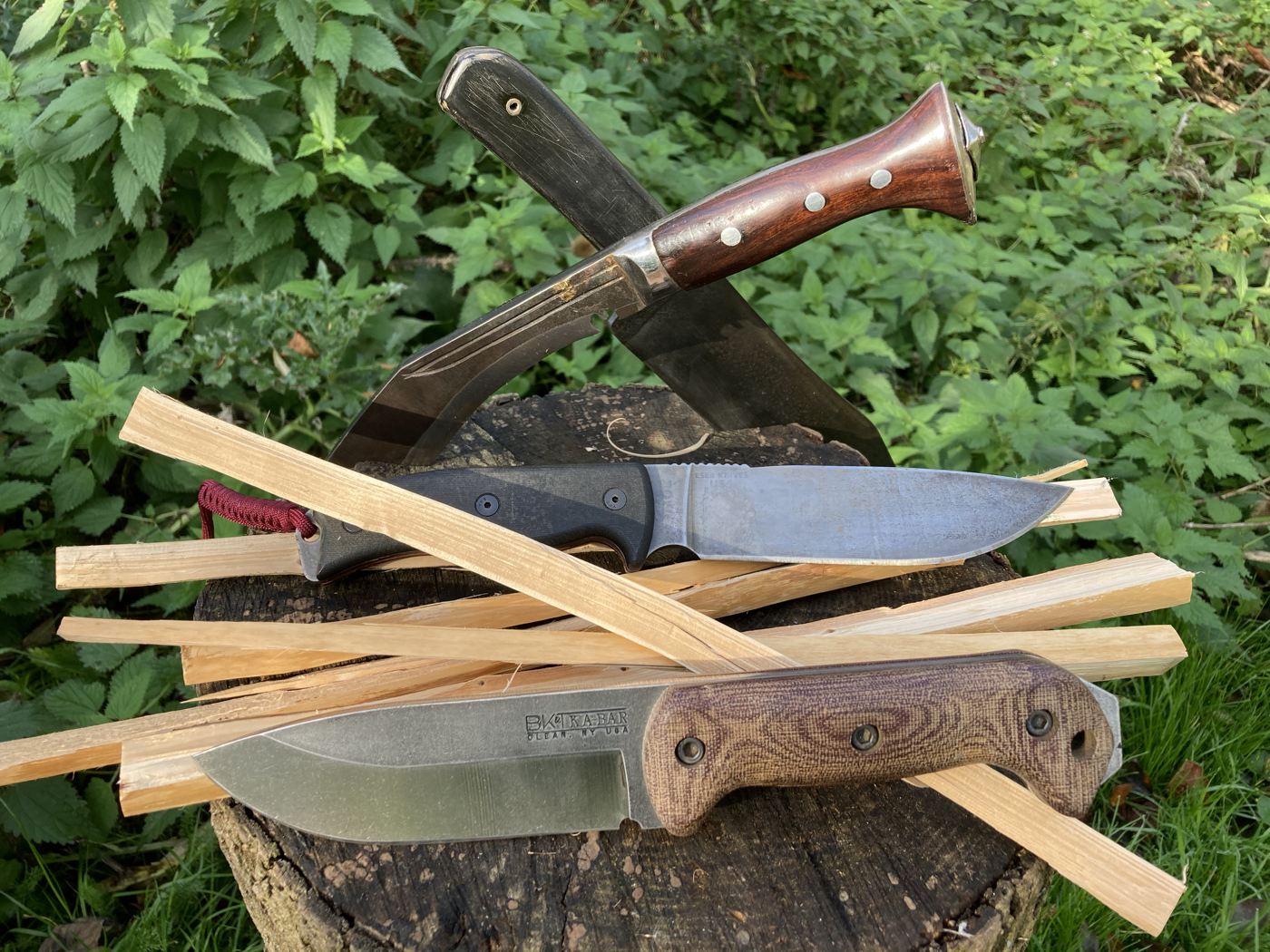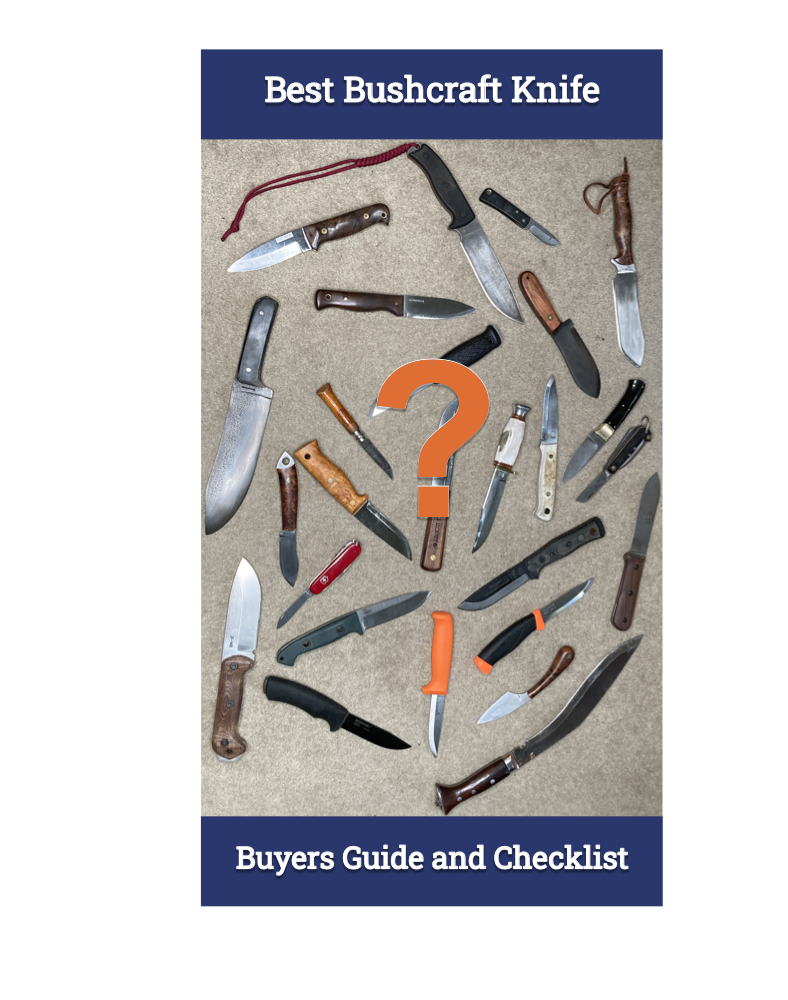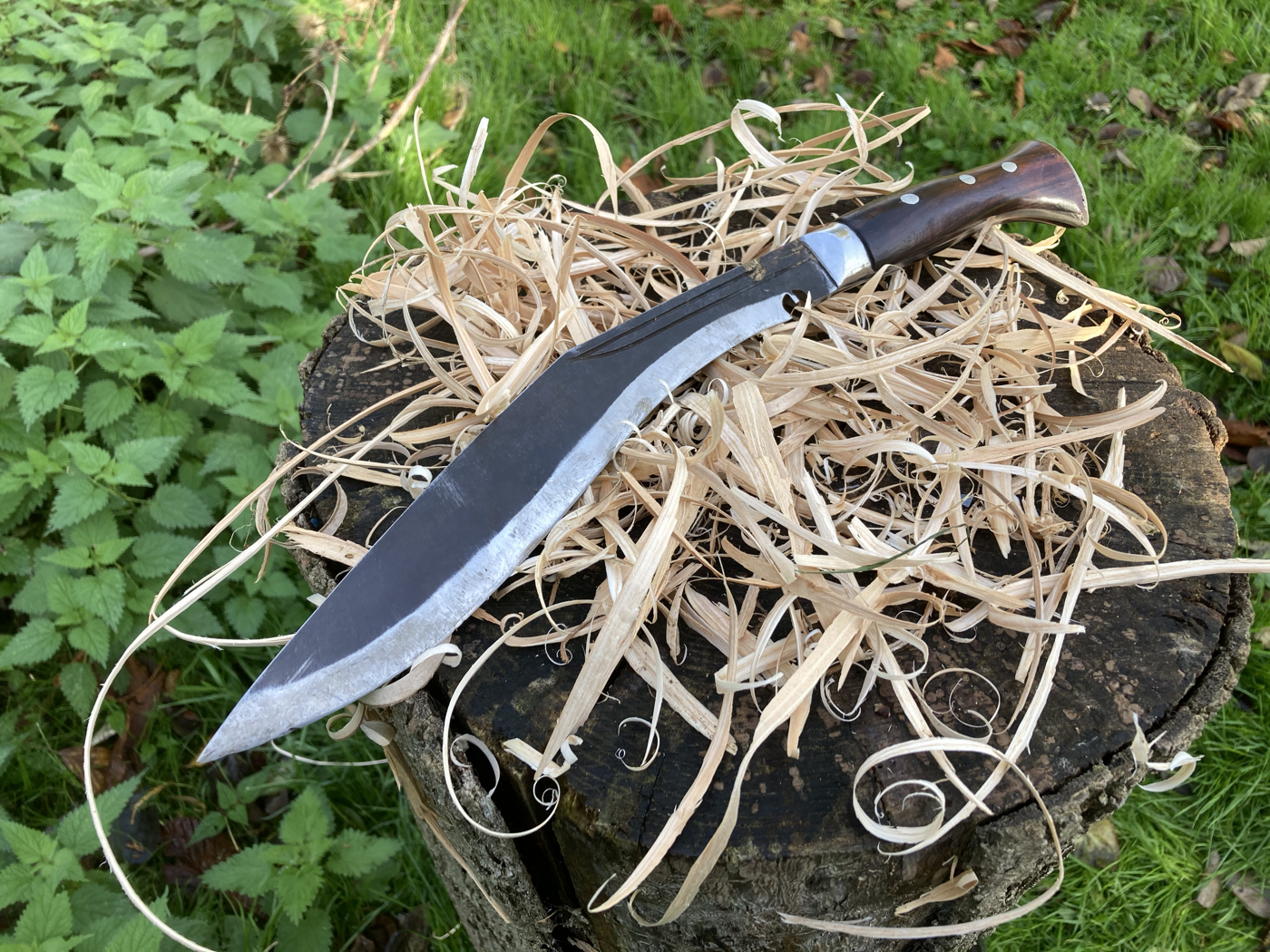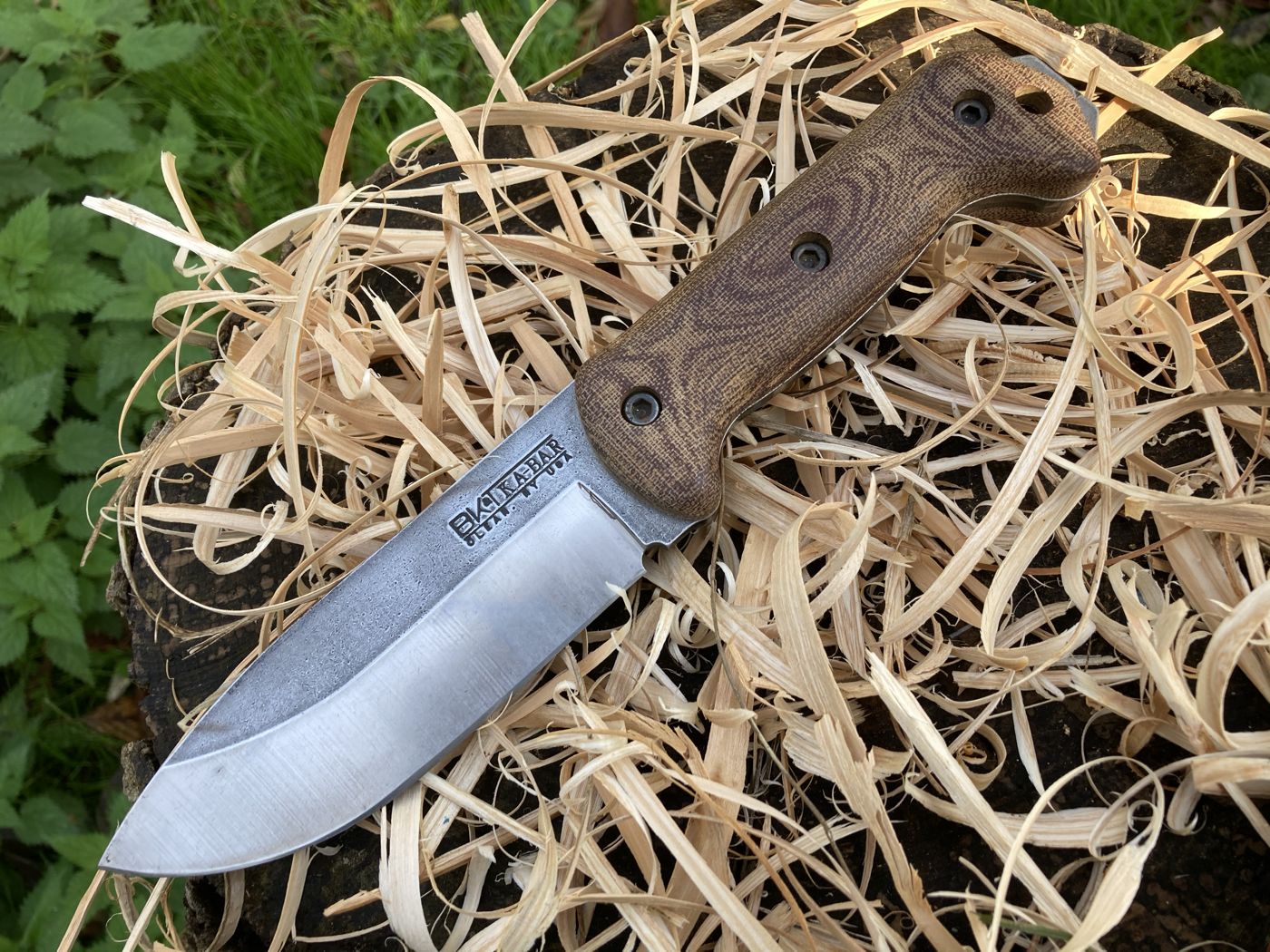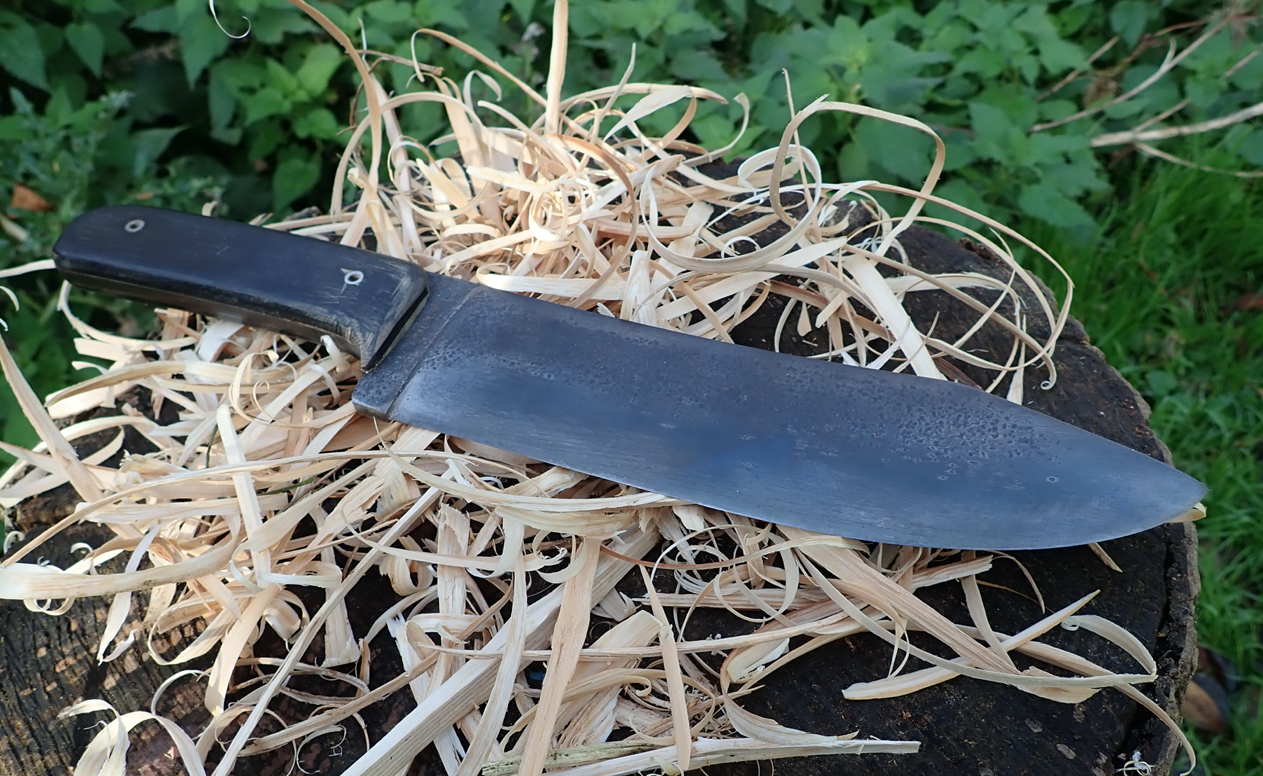What is the best bushcraft knife for chopping or batoning? [FREE Buyers Guide]
Perhaps the best bushcraft knife for you is one that is a little larger?
Over recent years a number of TV personalities and Youtube bushcrafters have influenced the popularity of the types and styles of knives used. One trend has been to use knifes of increasing blade length and robustness. Whilst this isn’t necessarily a bad thing, it does dictate what these knives are good at. Larger knives tend to excel at chopping, slashing and batoning tasks and be less good at the more delicate detailed tasks. Once again, the tasks you plan to do will help inform if this is a good choice for you.
Kukri
The Gurkha Kukri knife from Nepal has its origins in a farm implement used primarily for chopping and is believed to be derived from a sickle. The massive 254mm (10”) blade is a robust 10mm (3/8”) thick giving this knife real heft. The exaggerated curve and bulbous front end bring this weight forward, ideal for powerful chops. Whilst traditionally blacksmith made, these knifes show a great deal of refinement, often being hollow forged to keep the weight manageable with an edge geometry that is robust but also razor sharp. If you are using your knife to harvest a lot of coppice type materials (hazel, willow etc) and want to use something a little different then this may be a good choice.
Ka-Bar Becker BK2
Ka-Bar Becker BK2. The best words to describe the BK2 are heavy duty and robust! It has a relatively simple and straight forward design that affords it clean lines but don’t let that fool you, this knife is meant to be a complete work horse! The 125mm (5”) blade is a whopping 6mm (1/4”) thick. The handle is well proportioned and surprisingly comfortable on a knife this heavy and whilst it fits my medium sized hands well, it also has room to spare for larger hands and using the knife with gloves on.
ESEE 6
The ESEE 6 was designed as a wilderness survival and tactical knife that has become very popular in the bushcraft community. Made from coated 1095, the 165mm (6.5”) long blade is around 4mm (5/32”) thick. For such a large blade the knife is surprisingly light and handy, due to being fully flat ground with a large micro bevel. This grind also allows the knife to be a good slicer - working equally well in the camp kitchen as it does at woodcraft tasks. The blade length does compromise its ability to undertake some of the finer more detailed carving tasks, if these are important to you. The lightest of the knives discussed here, its a slightly less capable chopper but still more than capable of holding its own. My only criticism of this knife is the rather square slab sided handle, which just doesn’t suit my hand. ESEE have listened to feedback in this area and have bought out a range of 3D G10 handled knives that greatly improve the feel. Fortunately, these are available as after market spares should you wish to upgrade yours.
Condor Hudson Bay
The Hudson Bay is Condor’s tribute to the hunters, trappers and voyageurs who opened up the northern territories. This knife always reminds me of mountain man movies like Jeremiah Johnson and Retribution. Designed as a general purpose camp knife, its 216mm long blade (8.5”) is 5 mm thick (3/16”) and is made from 1095 steel. It’s imposing in the hand and can handle the toughest camp jobs from shelter preparation to fire wood collection and processing. It does however require a little care to keep the blade free of rust especially when exposed to inclement weather.
Summing up the best bushcraft knife for chopping or batoning.
Any of these knives would certainly be good choices for the best bushcraft knife for chopping or batoning. The thickness of these blades acts like a wedge and helps force the wood apart when splitting. Having a flat grind helps remove some of the carry weight, whilst still leaving sufficient heft for chopping activities. Personally, I prefer a convex edge on blades that I plan to use for chopping and batoning but that kind of edge is a relatively easy fix with any micro-beveled knife.
For me, the biggest downsides of these knives are the carry weight and the loss of ability to do fine detail work. These are certainly not the knives for the ultra-light bushcrafter! Paired with a smaller knife to undertake detailed tasks, these knives have a massive amount of potential and utility.

